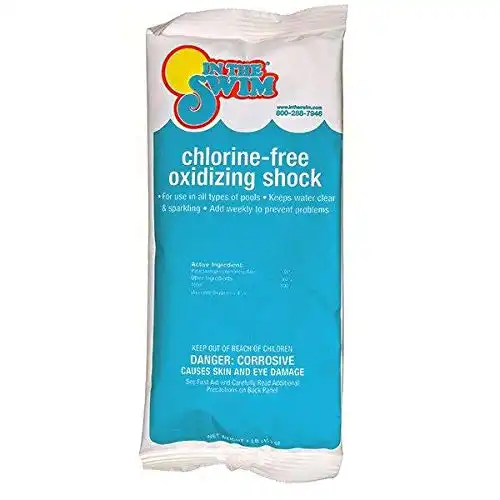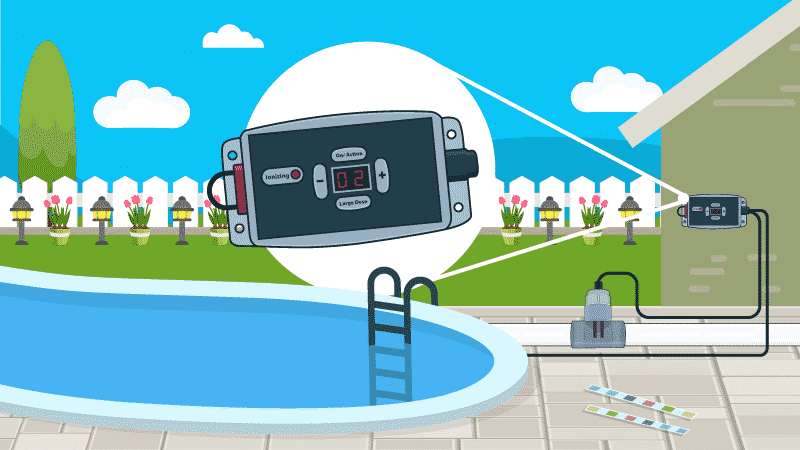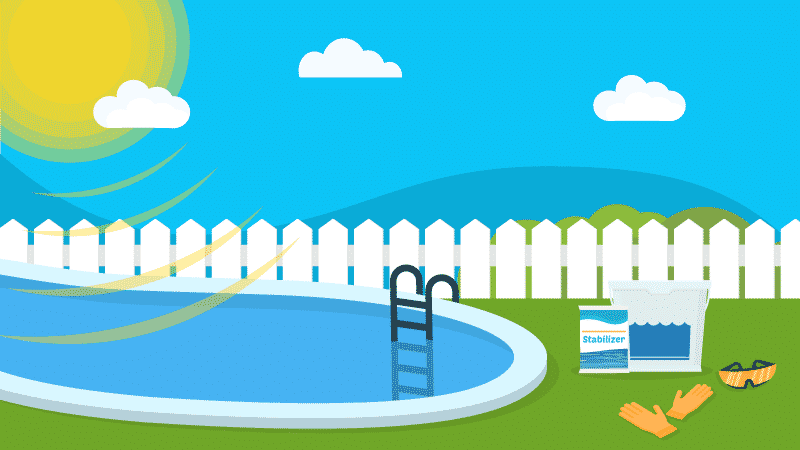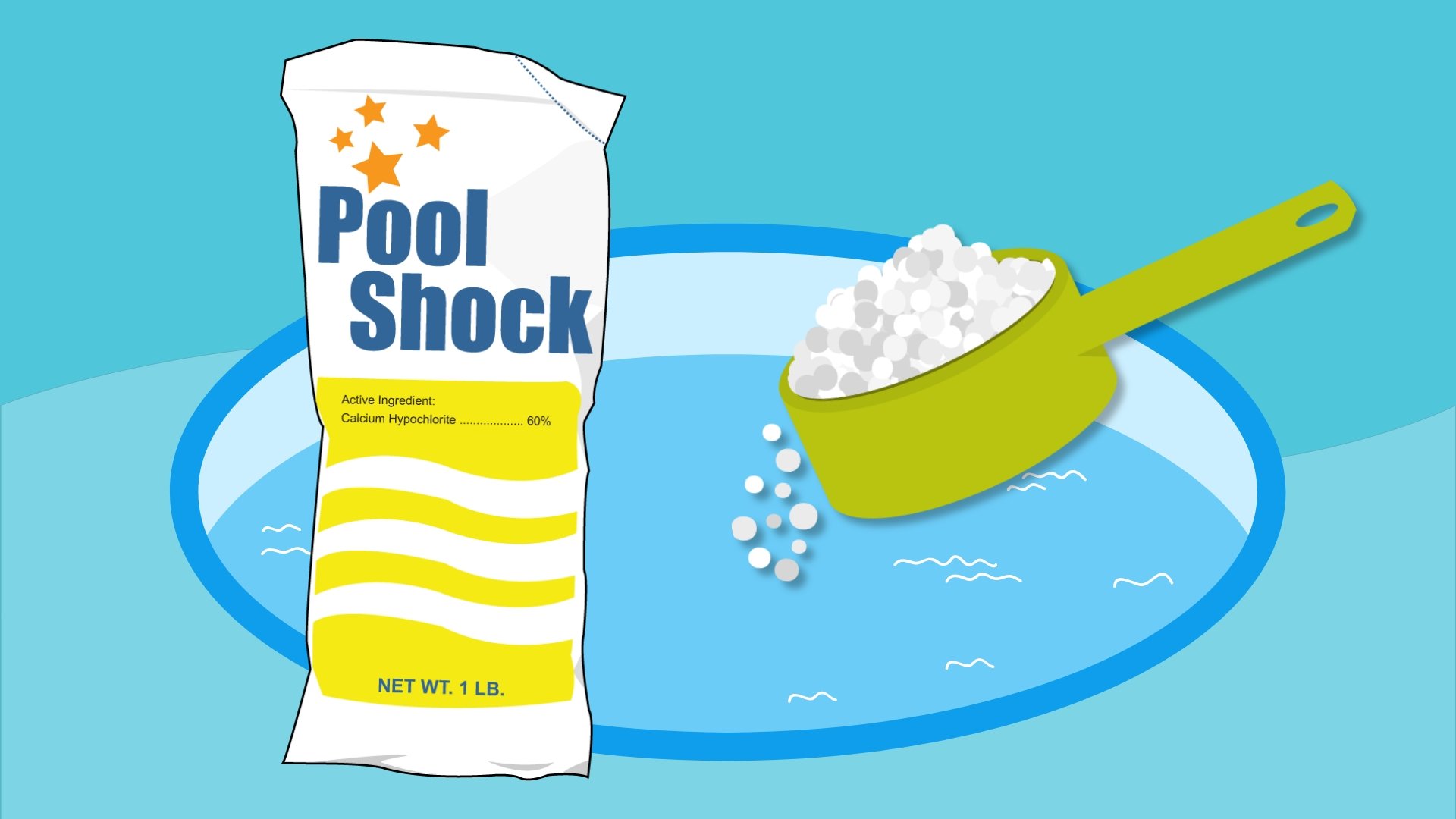Non-Chlorine Shock: Is It Better For Your Pool Than Chlorine?
Shocking your pool regularly is a crucial part of maintenance. But should you use chlorine shock or non-chlorine shock to keep your water clean and clear?
While a non-chlorine shock is a great option for weekly pool maintenance, especially in smaller pools and saltwater systems, it’s not the best for every situation. So here’s everything you need to know about non-chlorine shock, its benefits, and when to use it.
Stop wasting time and money with confusing water chemistry and maintenance. Our effortless system guarantees to keep your pool balanced, sanitized, and crystal clear all year. Works for all pools including saltwater.
What is Non-Chlorine Shock?
Non-chlorine pool shock acts as an oxidizer to remove organic contaminants, like sweat, oil, and dead skin, from your pool water. It also helps break up inorganic matter like lotion and deodorant. It’s safer to use than chlorine-based pool shock and you can swim shortly after using it.
Even without chlorine, it helps reactivate your sanitizer, removing by-products like chloramines that build up as your chlorine is used up. While there is bromine shock, the most common form of non-chlorine shock is potassium monopersulfate (MPS), which is available in powder or granular form:
A powerful oxidizing agent that eliminates combined non-sanitizing chlorine (chloramines) and provides higher free chlorine levels. Helps eliminate algae growth as well as harmful bacteria. Ideal for use with chlorine or bromine sanitized applications, weekly maintenance, and will not affect other chemical levels
How does it differ from chlorine shock? Non-chlorine shock uses oxidization instead of sanitization to break down contaminants whereas sanitization kills bacteria. This makes non-chlorine shock a gentler option but chlorine shock a more powerful, harsher chemical. When you super chlorinate your pool with chlorine shock, the chlorine levels become incredibly high. And that makes your pool unswimmable until the chlorine reaches a safe level.
By regularly using a non-chlorine shock treatment, your regular sanitizer (chlorine) will be much more effective at maintaining clean and clean pool water. And when your sanitizer works more efficiently, you can avoid issues like algae and cloudy water.
Use chlorine-free pool shock on a weekly basis to prevent algae growth and kill harmful organic contaminants, such as bacteria.
The oxidation process in non-chlorine shock also helps reduce foaming and reduce the strain on your filters. That means needing to use less anti-foam chemicals.
Benefits of Non-Chlorine Shock
When compared to chlorine-based shock, non-chlorine shock has several advantages:
Gentler Shock Alternative
Non-chlorine shock is an effective, weekly water treatment without harsh side effects. Unlike chlorine shock, you can jump in for a swim just 15 minutes after adding it to your pool water.
However, if you have a persistent or out-of-control algae problem, the non-chlorine shock won’t do the job. You’ll need to use a chlorine shock to sanitize and kill contaminants when a non-chlorine option isn’t sufficient.
Doesn’t Raise Chlorine Levels
Using a chlorine shock will temporarily increase chlorine levels to the point where it is unsafe to swim. That means waiting at least 8-12 hours before using the pool again. But when you use a non-chlorine shock, you’re not adding any more chlorine to the water, so your levels will remain consistent. This is great for smaller pools or saltwater pools where increasing your chlorine levels too much might be a problem.
That said, it can affect your alkalinity and pH levels. If you use too much non-chlorine shock, you can cause your alkalinity and pH to decrease. And that means you may need to add something, like pH increaser, to raise the pH level back to between 7.4 and 7.6.
Won’t Raise Cyanuric Acid Levels
Certain chlorine-based shocks will raise your cyanuric acid levels. Cyanuric acid acts as a pool stabilizer to protect chlorine from the sun’s UV rays. Without a pool stabilizer, the UV rays can destroy your chlorine within a matter of hours. But, if you have too much cyanuric acid, the chlorine won’t be able to sanitize your water as effectively.
Since non-chlorine shock isn’t stabilized with CYA, you won’t have to worry about increasing cyanuric acid levels.
Won’t Alter Calcium Levels
Non-chlorine shocks also prevent fluctuations in your calcium hardness levels. Calcium is normally found in hard water supplies. And many chlorine shocks are made with calcium hypochlorite.
If the calcium level in your pool water is too high, it can lead to scale buildup on the sides of your pool, filters, and other pool equipment. It’s challenging to remove, and may permanently damage some components.
Clears Cloudy Water
As the chlorine in your pool reacts with pollutants, it becomes combined chlorine, a.k.a. chloramines. And when chloramines built up, you may notice cloudy water and even eye and skin irritation. Using a non-chlorine shock removes those pollutants and makes more free chlorine available to sanitize. Combine it with a clarifier and you can keep your water sparkling clear. Plus you can use it more often since it’s a gentler alternative to chlorine shocks.
Good for Saltwater Pools
Saltwater pools use saltwater generators to turn salt into chlorine. And that means you really don’t need to add more chlorine to the water. A non-chlorine shock keeps your water clean without altering the water’s chlorine level. Plus chlorine shocks like cal-hypo shock can cause calcium build-up in your saltwater equipment. However, it won’t be powerful enough to kill an algae bloom.
When Should You Use Non-Chlorine Shock?
While a chlorine-based shock has its place in pool and hot tub maintenance, there are many instances when you should use non-chlorine shock.
If you need to shock your pool but want to go swimming shortly after, that’s the perfect time to use a non-chlorine shock. Simply add it to your pool water according to the manufacturer’s directions and you should be ready to swim in 20 minutes or less.
If you’ve got a saltwater pool or a smaller pool, a non-chlorine shock is a great regular treatment. Because saltwater pools have a built-in chlorination system and are prone to calcium buildup, you’ll want to avoid chlorine shocks with calcium hypochlorite. And it can be difficult to bring down super high chlorine levels in smaller pools, so a non-chlorine shock is best here too.
You’ll want to keep your chlorine levels at 1 to 3 parts per million (PPM) or a bit higher in saltwater pools. At 5 ppm or higher, swimmers may start to experience eye and skin irritation. 10 ppm or higher is the usual level for a chlorine-based shock.
If you have cloudy water, a shock oxidizer or non-chlorine shock can be a helpful easy, remedy. You can also add a non-chlorine shock to your pool or spa water between chlorine shocks.
But a non-chlorine shock will not work if you have a serious pool water problem, like algae. You’ll need a more powerful, chlorine-based shock (like cal-hypo shock) to handle problematic pool water.
How to Shock Your Pool With Non-Chlorine Shock
Even though it’s not as harsh as chlorine, you should still take some safety precautions when using non-chlorine shock.
Always wear gloves, protective eyewear, and adequate clothing when working with water treatment chemicals. For most non-chlorine shocks, you can broadcast it directly into a pool. But if you’d like to pre-mix your shock to avoid any wind blowing shock outside of your pool, you can do that as well. Just always follow the manufacturer’s dosing instructions.
If you want to pre-mix your shock, add the shock into a five-gallon bucket of water and stir with a wooden spoon. Then, pour the shock solution around the pool’s perimeter. Set a timer for 15 minutes. Once it goes off, your water is ready!
Frequently Asked Questions about Non-Chlorine Shock
Need more help with non-chlorine shock? Here are some commonly asked questions and answers.
Can I shock a pool with no chlorine in it?
Your pool needs a sanitizer, like chlorine, to kill bacteria and prevent algae buildup. If you need to shock a pool that has no chlorine, use a chlorine-based shock.
Does non-chlorine shock raise chlorine levels?
No, non-chlorine shock will not raise chlorine levels. It can, however, affect the pH balance. The average pH of non-chlorine shock is 2.3, which can bring your pH out of its normal range (7.4 to 7.6).
How long does a non-chlorine shock last?
A non-chlorine shock is great as a weekly treatment, but it won’t continuously sanitize your pool or kill algae. You’ll still need to add a sanitizer like chlorine to your water. And on occasion, you may need to use chlorine shock.
How long does it take for a non-chlorine shock to work?
Non-chlorine shock starts working immediately by boosting the effectiveness of your sanitizer in your water. And it’s safe to enter the water within 15 to 20 minutes after adding it to the pool.
Can you use too much non-chlorine shock?
Yes, you can use too much non-chlorine shock. If you use too much, the overall pH level of your pool will drop for an extended period of time. You’ll have to fix it by adding another chemical like sodium carbonate (soda ash) or sodium bicarbonate (baking soda) to raise the pH level.
3 Ways We Can Help With Your Pool
- Pool Care Cheat Sheets (Free): Easy-to-use downloadable guides to help you keep track of taking care of your pool this year.
- The Pool Care Handbook: An illustrated guide to DIY pool care, including water chemistry, maintenance, troubleshooting, and more.
- The Pool Care Video Course: You’ll get 30+ step-by-step videos and a downloadable guide with everything you need to know about pool maintenance.










